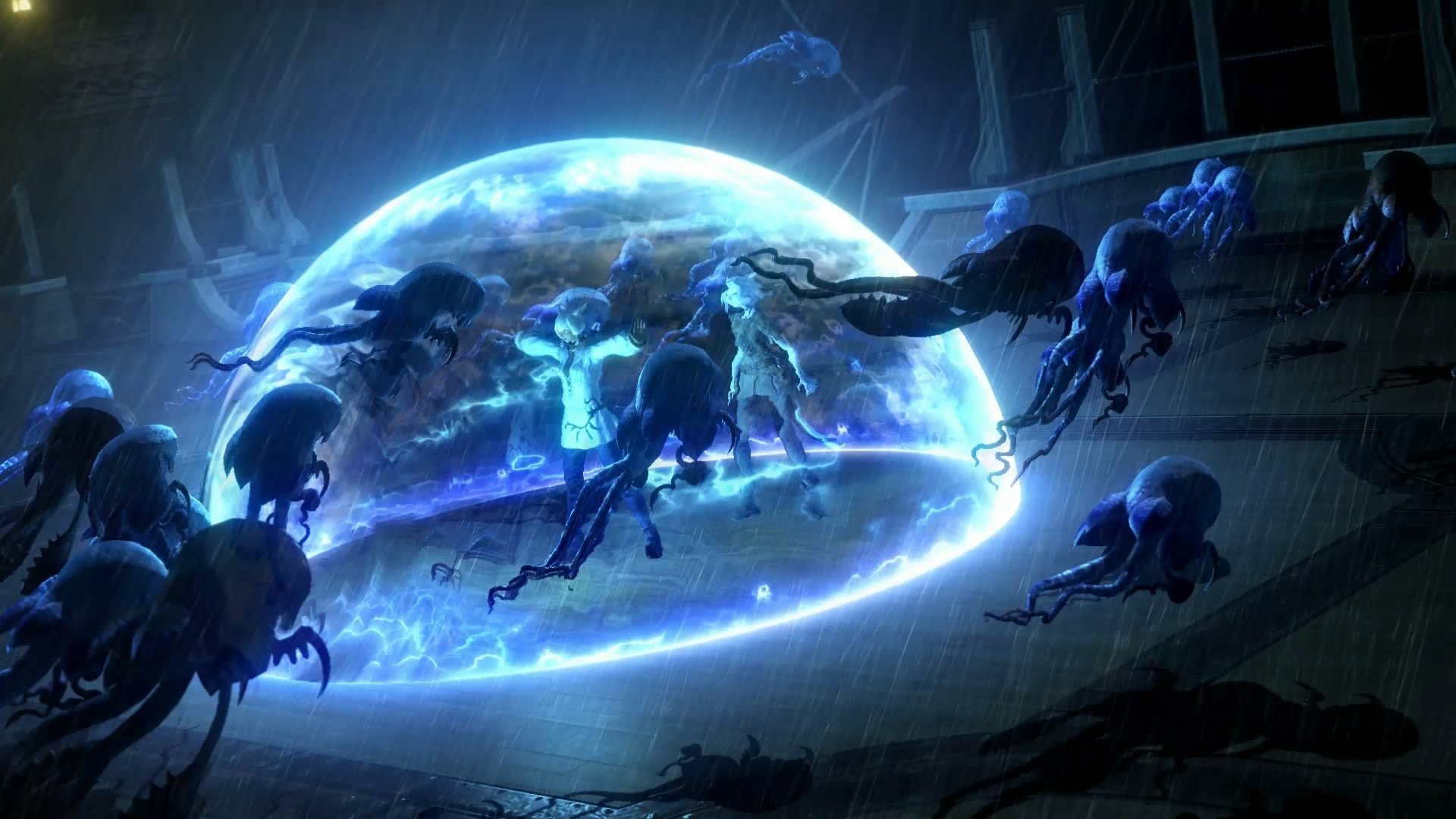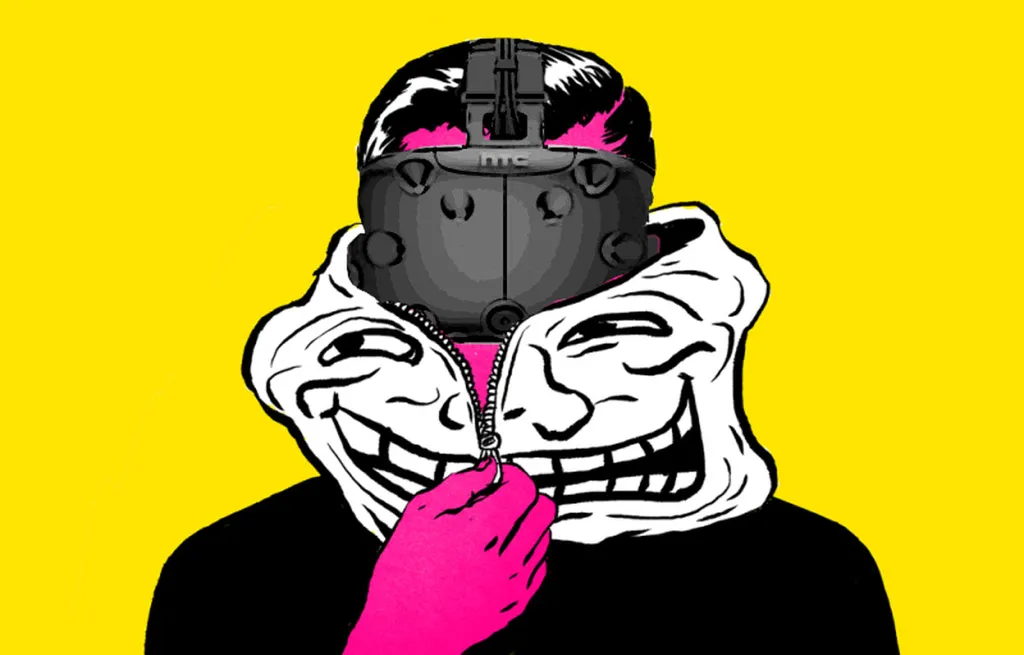Editor’s Note: The below post is written by Henry Jackson and Jonathan Schenker, one of the developers of QuiVr. His multiplayer VR game was recently mentioned in a post titled “My First Virtual Reality Groping” that has reverberated beyond the gaming community.
I didn’t realize the article was about us when I first started reading. But of course it was about us; it was about the entire VR development community, after all. The link I followed read, “I was sexually assaulted in virtual reality. This is a big F*cking problem,” and was about a woman’s experience being harassed in a virtual environment. As someone deeply involved in the growth of VR, this was extremely unsettling for me. And then I saw about a paragraph in that the author had been playing QuiVr when it happened. QuiVr is the game that my friend, Jonathan (“blueteak” in the VR community) and I have been investing ourselves into making for months. My heart sank.
This had happened in our game; this had been on our watch.
The author was surprisingly complimentary towards the game itself, given the circumstances, and yet it’s difficult to explain my reaction. The article was extremely well written and left me deeply saddened, but also grateful that the author had the courage to tell the story. We need this sort of examination. At the same time, Jonathan and I both felt responsible for what had happened. This was not the intended purpose of our game, of course. The models deliberately have no gender identifiers, and we’ve thought long and hard about a concept we call, “cooperative independence” – the idea that players are side-by-side, but gameplay is not dependent on anyone else. Everyone can play together, yet no one can interfere with each other.
The first thing I felt was that we had let someone down. We should have prevented this in the first place. While QuiVr is still in pre-release alpha, we’d already programmed a setting into the game called your, “Personal Bubble,” so other player’s hands disappear if they come close to your face. This way, the rare bad-apple player can’t block someone else’s view and be annoying. The arrows that get shot at you stick in your helmet, which is good for a laugh, but they do no damage and quickly disappear so they don’t get in the way. We hadn’t, though, thought of extending that fading function to the rest of the body – we’d only thought of the possibility of some silly person trying to block your view with their hands and ruining the game.
How could we have overlooked something so obvious?
I called Jonathan, who is not only the original creator of QuiVr, but one of the people I respect the most in the industry to date. He’d already seen the article – his girlfriend had sent him the link – and he had spent the morning changing the game to extend the Personal Bubble; now, when the setting was turned on, other players faded out when they reached for you, no matter their target, chest included. It was a possible solution; no one should be able to treat another player like the author had been treated again.
But in talking, we quickly realized that it didn’t feel like the entire solution. It was functional, but only addressed the act that caused the damage, not the damage itself. To us – though we’re not at all experts on personal space – the strengths and weaknesses of VR are often the same. The reality of the experience, of being “present,” makes everything more powerful than on a flat, 2-dimensional screen. The medical community has been exploring the use of VR to help treat PTSD, phobias, and phantom limb syndrome. If VR has the power to have lasting positive impact because of that realism, the opposite has to be taken seriously as well.
So, we would like to float a possible way of thinking for the VR development community to consider as we grow. It consists of two parts. One, that we should strive to prevent harassment from happening in the first place, of course. But second, when harassment does happen – and I see no way to prevent it entirely so long as multiplayer experiences exist – we need to also offer the tools to re-empower the player as it happens.
I don’t know if we are right in this belief, but it seems a reasonable one to us – if VR has the ability to deprive someone of power, and that feeling can have real psychological harm, then it is also in our ability to help mitigate that by dramatically and demonstrably giving that power back to the player before the experience comes to an end.
For example, what if a player had tools on hand to change the outcome of the encounter before it ended in a negative way? How different would our childhood memories of the schoolyard bully be if our bodies had been immovable when shoved, or we could mute their words at the push of a button? Would the author’s experience have been any different if she could have reached out with a finger, and with a little flick, sent that player flying off the screen like an ant?
I believe it might be. I believe that this obnoxious player would have been annoying and adolescent, and then when gone, the game would have continued. And when it was done, there would not have been the feeling of a battle that was still being fought days after the fact.
It would instead have the feeling of a battle that was won.
In her article, the author commented that the feeling of the original encounter remained with her for days afterwards – I can absolutely understand this. Even for me as a passive participant reading the article, I felt that anger and vulnerability carry with me. This highlights for me the potential and dangers of VR itself. The medium should force us to really think about how the sense of “presence” changes interactions that would feel less threatening in a different digital environment.
Thankfully, with the amazing power of VR, where one person’s perspective of reality does not have to match the other person’s in the same game, it’s actually possible to do this without ruining the game for everyone.
With all the above in mind, Jonathan and I revisited our Personal Bubble setting. The changes we made were slight, and potentially more symbolic than consequential. We’re not really sure, but we’ll see. Before, when a player turned on their personal setting, you had to do it by pushing pause, browsing a menu, and selecting it. When it turned on, there was no announcement; the hands of other players simply faded away when they reached for you.
Now, though, activating your Personal Bubble is more like engaging your own superpower. You can still turn it on via the settings, but you can also activate it by what we’re calling a “power gesture” – putting your hands together, pulling both triggers, and pulling them apart as if you are creating a force field. No matter how you activate it, the effect is instantaneous and obvious – a ripple of force expands from you, dissolving any nearby player from view, at least from your perspective, and giving you a safety zone of personal space. It’s an instant creation of control. Any player that teleports next to you will fade away as they approach – and in reverse, you’ll fade from their perspective as they approach, as well. Other player’s voice audio is automatically muted, and you’re given the option to select who you want to hear again. You have the power to turn this on and off – essentially giving you dramatic and instant control of your own space again.
To prevent people from using this as a way to grief other players – another issue VR has to deal with – the visual effects are generally localized to each player’s perspective. If you are standing next to someone that activates their Personal Bubble, the ripple of power passes through you, and they vanish from your perception. It’s as if they are no longer in the same dimension as you, so long as you’re close enough to be in each other’s way. Doing so also mutes the other players from your own system so you can’t hear them, and walks you through selectively turning back on only those you want to hear.
We don’t know if this solution will work perfectly, and it’s certainly not the only solution; like everyone in VR, we’re just learning how to approach these very real problems. But, we think it’s a reasonable place to join the conversation, and it’s worth thinking through what new obligations and responsibilities VR developers have when given the ability to literally create a player’s self image.
The Power Gesture as 911 for VR Experiences

As I was soliciting feedback on this perspective from other members of the community, a theme emerged. Non-VR players really liked the idea of the Power Gesture – a pro-active motion the you knew going into the game could call up defenses if you needed out. Yes, you can always simply take off your HMD, but that is just fleeing the environment, and leaves all the possible threat for when you put it back on. It doesn’t solve anything. The same can be argued for disguising a player’s voice so they can play in peace – while a possible solution, we also need to offer tools that give players better controls, not simply better ways to hide. VR has the unique power to do that.
I’d think it would be interesting if the concept of the Power Gesture were to become a part of the VR design thinking. Whatever the details of that gesture might be, the concept is simple – a single, cross-platform and cross-game action that players can rely on as their call to a safe space. Like 911, which is the number we all know to call for help in the United States regardless of which state you happen to live in, it would be a gesture that we teach to our kids and all VR players in the event something goes wrong.
With that possibility in mind, we’re going to contribute our code for the Personal Bubble to the excellent open source framework, VR Toolkit. It will have to be tweaked for each game, of course, but perhaps it can be built on if useful. Or, maybe there are better solutions to the same issue. Part of the VR journey is that we’re all building these roads from scratch as we go.
Perhaps “power gesture enabled” can be a concept that’s part of the VR development language – the 911 gesture of protection and safe space, be it against sexual harassment, bullying, or any other form of unwanted confrontation. So when things don’t go well, when something happens that we as developers can’t predict and shield our players from, there’s always a safe place to be found – hopefully not just in QuiVr – but in VR in general.





























